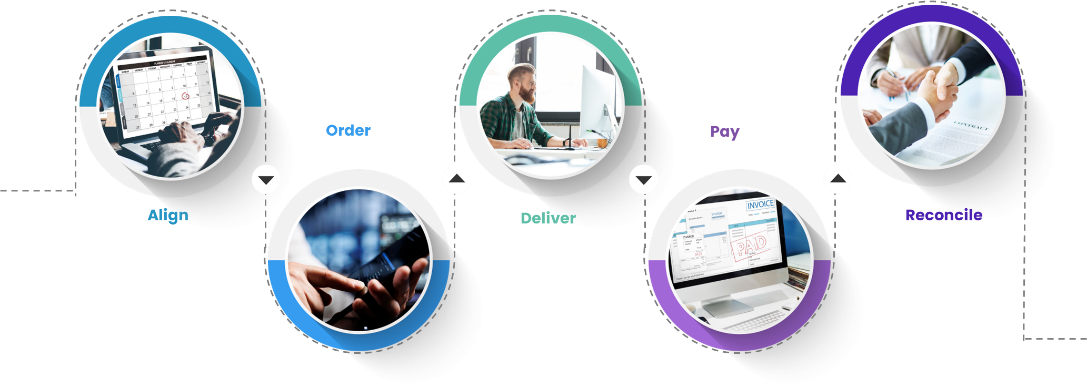Why do most EDI practices struggle to onboard new trading partners
Clearly one of the biggest challenges businesses have with successfully executing an EDI strategy is the onboarding of new trading partners. This challenge appears regardless of network or affiliation and whether the solution is an everything-to-everyone VAN or a simple service.
The fact is that most EDI solutions including those recommended by a partner, an ERP provider, or a marketplace are still bringing trading partners on line electronically the same way as they’ve been doing for years, beginning with a first in, first out philosophy. If nothing changes in the practice and nothing changes in the process, the same issues persist.
Why is that?
Many organizations initiate the painful and often disappointing cycle of partner onboarding themselves. They leverage their legacy products, driven by internal needs, and disappointing outcomes. Many more leverage EDI service providers, in many instances, possess multiple legacy products and a pressing need to market an updated product or service subscription. The initial internal conflict within the service organization makes these providers slow to respond to requests for new trading partner requests.
Additionally, they are often less inclined to deviate from established procedures, hindering much-needed changes to their practices. It is worth noting that at this stage, the practice is inundated with new and inexperienced resources. This poses challenges in adapting to evolving demands and adopting innovative approaches within the dynamic landscape of EDI.
Moreover, change is one of those necessary ingredients for survival in an ever-changing world, which includes newer ways of doing things even with legacy products. Much like fashion, change never goes out of style, and without integrating change into legacy or even antiquated platforms or practices, businesses simply cannot respond to modern EDI integration requirements that are needed in the market today.
Much of this change starts with the ongoing challenge of partner onboarding. The complexity of onboarding new trading partners begins with the EDI solution and how that solution has enabled change from the point where the solution team first encounters that next trading partner. Then there is the issue that companies leveraging EDI with their business partners cause based on a reluctance to provide precise directions by way of EDI specification documentation or samples in a sort of public forum.
Maybe companies do not know what their trading partner profile looks like or how to demonstrate it or just maybe they have never gotten around to producing or updating their specification document. In any case, keeping important EDI information behind a firewall and away from public view until the point where the opportunity to connect has arrived is certainly counterintuitive to making business work. Whatever happened to giving a partner a heads up?
Don’t Make Enabling Your Partner Hard: Two Recent War Stories
Here are two recent customer examples that demonstrate how businesses are making it harder than it should be; the first example is an internationally recognized mid-market meal-kit foodservice provider and the second, two well-known fashion and apparel dynasties.
Pay Attention to Detail
Let us begin with the first with one, an internationally known publicly traded mid-sized foodservice provider. In this example the food service provider’s business partner contacted PartnerLinQ asking how they could connect with them via EDI. As experts in the space, we naturally understood both the transactions and the steps needed to enable the EDI connection, so we set out on the path outlined by our customer’s business partner, which according to their web site, was to contact their EDI solution provider via a posted email address. So, we did just that.
Four weeks and dozens of emails later PartnerLinQ escalated the latency to our request to the business partner’s sales team, requesting a personal contact to get the ball rolling. During this process we also had to wait for the specification and sample documents to be forwarded to us to confirm, since there were no postings or even publicly displayed documents of any sort, not even an email address. Due to this oversight both our customer, the foodservice provider, and their business partner would not gain any benefit from using EDI for yet another month, further delaying any ROI that could be derived.
Make it Easy to do Business
The second example is a well-known German shoe manufacturer, who produces and sells a particular brand of sandals and custom casual shoes known the world over. The problem arose when their business partner, a global footwear company that is home to a diverse portfolio of loved and admired brands and ferocious about fit, encountered an unexpected EDI connection issue more than a year after they switched their EDI systems to a new provider.
The business partner’s new EDI solution provider in this case was reluctant to fix the problem, even to the point of near refusal in remediating the connection issue. The reason provided was that the remedy fell outside of the classic remediation process. This same EDI solution provider doubled down on their refusal to fix the problem even after when one of the parties introduced options into conversation in an attempt to resolve the issue.
How Maesa Cut EDI Onboarding Time by 50% with PartnerLinQMaesa, a global beauty brand, cut onboarding time by 50% with PartnerLinQ by replacing fragmented systems with a unified EDI platform—gaining real-time visibility, faster partner integration, and enhanced supply chain agility. |
This really impacts my business…how do we fix it?
While these examples do not necessarily represent how everyone approaches their onboarding project, using a targeted best practices approach ensures your team is on their game, aware, and responsive even under the most trying circumstances.
After all, a global understanding of a ‘global standard’ is rather uncommon knowledge and EDI specifications no matter how precise they come are not proprietary. Many of the largest retailers and suppliers understand both, and make it their business to get connected, and in terms of specifications, make this information public.
The second part of these stories and the reason for writing this blog post is to help you get over, under and around such obstacles. Keeping your eye on the goal is critical and recognizing obstacles so they can be avoided in the future comes in a close second.
As you look into your EDI strategy for 2024, below is a list of those obstacles and what you can do to avoid them.
When looking to engage with a new business partner, look at their EDI profile and where they keep their EDI specifications. If these instructions are not clear or you cannot even find them, ask the business partner for their EDI profile or EDI specifications before you start down the engagement path. For a great example of what a good EDI profile looks at Burlington or Macy’s profiles. Bottomline, if a prospective partner is giving you a hard time or is making it difficult to even get this information, you might want to consider putting another partner ahead of them.
When dealing with a business partner whose point of contact is a solution provider causing delays rather than expediting integration, it is advisable to document the incident and the provider involved. This proactive measure is essential not only to address the immediate setback but also to safeguard against selecting them as your EDI solution. By doing so, you can effectively sidestep a significant obstacle on your journey toward achieving your goal.
When you are talking to a new EDI solution provider, the first question they may ask you will be a good indication of what they do. So, if they ask about your volume and not your transactions or where you find issues, it is a good sign that they need to sell a subscription and are not as interested in solving your connectivity issues, or helping you grow your EDI practice as you might think.
When engaging with an EDI solution provider, inquire about their methods for comprehending the unique operations of each trading partner. If their predominant responses revolve around ‘network’ or ‘history,’ it often signifies a dependence on legacy systems rather than fostering a dynamic culture of continuous improvement. For your EDI practice, which demands meticulous attention to detail at this stage of maturity, such a commitment to embracing change becomes crucial.
Committed to Making it Easy
These war stories represent just a glimpse into the myriad experiences we have encountered in our journey, each contributing to our ability to diagnose problems effectively and apply best practices. At PartnerLinQ, we are dedicated to simplifying complexities.
We have been studying our EDI customers and competitors and recognize that digital agility between business partners is what most Multi Enterprise Collaboration Network customers want. Removing friction caused by multiple formats and connections is where we began. Beyond EDI, we’ve added an AS2 solution, an API Layer for Commerce Channel connections and included the ability to connect with a broad ecosystem of Commerce Platforms, Marketplaces, B2B Portals, Social Channels, Credit Cards, and Shipping Solutions.
We are committed to making it easy and if you would like to explore your options with a PartnerLinQ expert, we are happy to help and there is no obligation. Contact us today!
 PartnerlinQ
PartnerlinQ
















